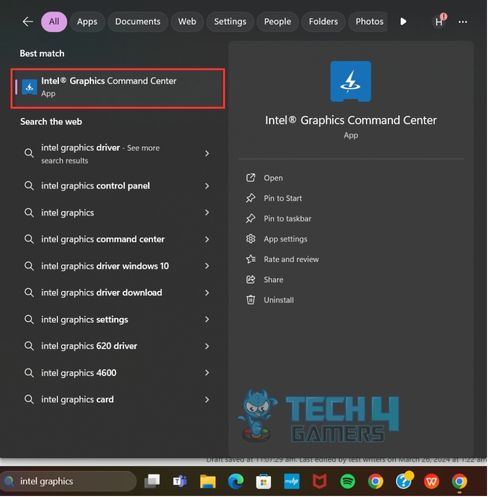- Intel’s Alchemist lineup had a rocky launch plagued with driver issues.
- Underwhelming performance made it difficult for users to switch over.
- The rapid response from Intel is a good sign of things to come.
After much speculation and build-up, Intel launched the ARC lineup of dedicated desktop graphics cards in Q3 of 2022, with the flagship ARC A770 being launched on October 12, 2022. However, more than 1.5 years later, Intel does not seem to be in a strong position in the GPU market for the time being, which begs the question…
Is the challenge simply too much for Intel?
Intel Has A Long Way To Go
Intel made a wise decision to only launch entry-level and mid-range desktop graphics cards in their first generation, which was codenamed “Alchemist“. Perhaps this decision was made for them.
You see, Intel has long struggled to settle on a particular manufacturing process for their dedicated graphics cards, which have been teased for years now. Ultimately, Intel decided to pull the trigger with a 6nm node at TSMC, which is still actively producing the Intel ARC lineup as of the time of writing.

Despite having an immense pedigree in CPU manufacturing, Intel has its back against the wall from the get-go in the GPU department. In Q2 2023, we are looking at a hyper-dominant 87% market share for NVIDIA, a 10% market share for AMD, and a measly 3% market share for Intel in this space.

Safe to say, they have their work cut out for them.
Current Intel Lineup
For ARC 3, we have two entry-level models, the ARC A310 and A380, with MSRPs of $110 and $139, respectively. From these units, you shouldn’t expect much performance other than to just use them in a media streaming machine. We barely got competitive performance to a GeForce GTX 1060 in our tests.

The Intel ARC 5 A580 launched a bit later at $179, which seems like a great price point for a budget graphics card. However, the performance still leaves a bit to be desired, as the card showed comparable performance to a GeForce RTX 3050 in our gaming tests.

Then we get to the meat and potatoes. The ARC 7 A750 was launched at $289, while the ARC A770 had an 8GB variant at $329 and a 16GB variant at $349. The A750 is akin to a Radeon RX 5700 XT or an RTX 3060, while the ARC A770 is more in the territory of an RTX 2080 or an RTX 3060 Ti.

Not exactly what you want to see from a new, underdog company.
Challenges and Setbacks
Things got even worse after the launch…
Driver Issues
Soon after launch, the cracks began to appear in Intel’s armor, and their inexperience in this space started to show. The entire ARC lineup was plagued with driver issues that massively crippled the performance of these cards. In fact, users reported extreme slowdowns, crashes, freezes, and hard restarts upon first plugging in their new ARC GPU.

This was a PR nightmare for Intel, and they (admittedly) worked really quickly to solve it. However, this did not look good for a “new” company. Newer drivers have since been released, which has made these GPUs more stable, with some drivers causing a 200-300% uplift in performance in certain games!
Acceptance Rate
Intel’s offerings were really not enticing any new users to switch over to a completely new platform and take a shot in the dark. At best, their offerings were level with the already established options from NVIDIA and AMD in terms of value.
Anyone who wanted to give Intel a chance was maybe doing that in the hope of bolstering Intel as the chosen one to break the NVIDIA-AMD duopoly in the graphics card space. Still, the acceptance rate was shockingly low…
Manufacturing Problems
While Intel did find a home at TSMC for its 6nm node, the process wasn’t exactly smooth for Intel. TSMC is already operating at capacity with its projects with NVIDIA and AMD, so finding space for a new player wasn’t exactly easy. In fact, Intel deliberately chose to fight for a spot in TSMC’s production rather than use its own facility.

This is because using TSMC means that there is less capacity for its direct rivals to manufacture CPUs and GPUs. However, that also means Intel faces stern competition for Silicon’s allowance.
Future Outlook
As the wave of Alchemist passes and Battlemage appears on the horizon, Intel is in a much more stable place than it was a year ago. While yes they have not been able to claw back much market share themselves, they have earned a small target audience that is willing to take a chance on this “upstart” to destabilize the status quo.
Intel needs to grab this opportunity with both hands and launch a devastating blow to NVIDIA and AMD’s top-tier GPUs, with superb software support and a much lower price tag to back it up. Something tells me this battle is just beginning…
Thank you! Please share your positive feedback. 🔋
How could we improve this post? Please Help us. 😔
[Reviews Specialist]
Usman Saleem brings 8+ years of comprehensive PC hardware expertise to the table. His journey in the tech world has involved in-depth tech analysis and insightful PC hardware reviews, perfecting over 6+ years of dedicated work. Usman’s commitment to staying authentic and relevant in the field is underscored by many professional certifications, including a recent one in Google IT Support Specialization.
8+ years of specialized PC hardware coverage
6+ years of in-depth PC hardware analysis and reviews
Lead PC hardware expert across multiple tech journalism platforms
Certified in Google IT Support Specialization
Get In Touch: usman@old.tech4gamers.com
 Threads
Threads




